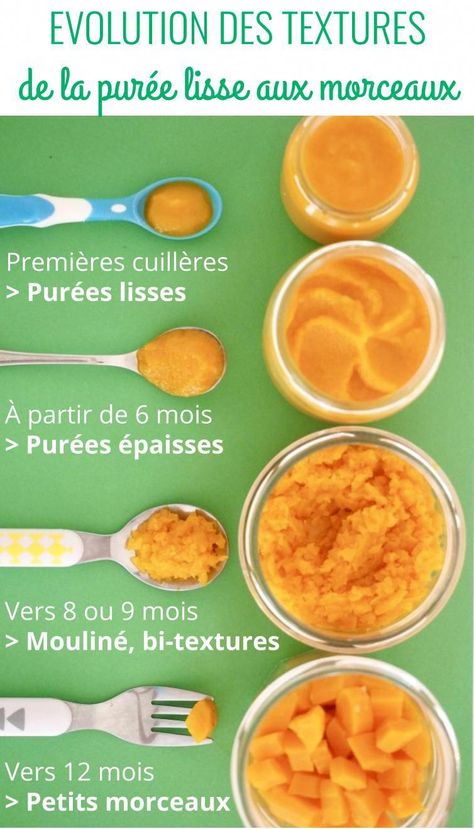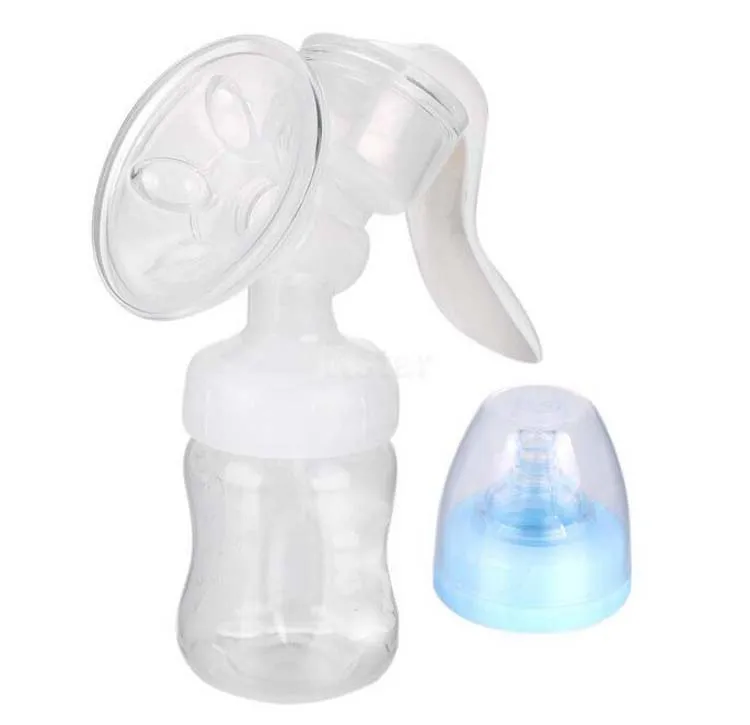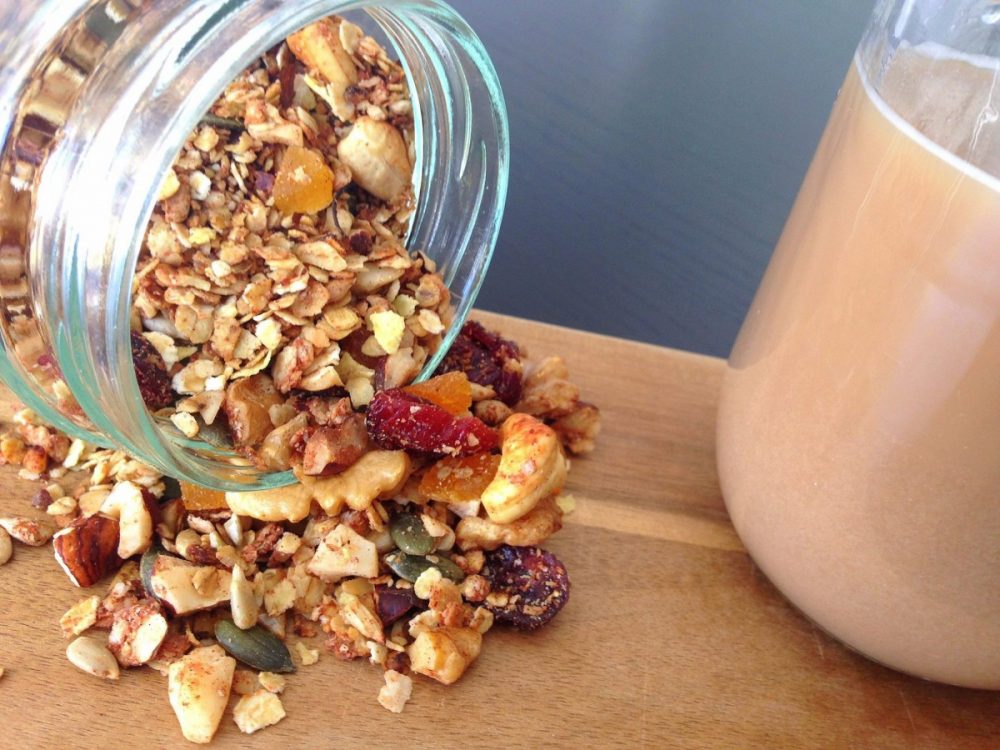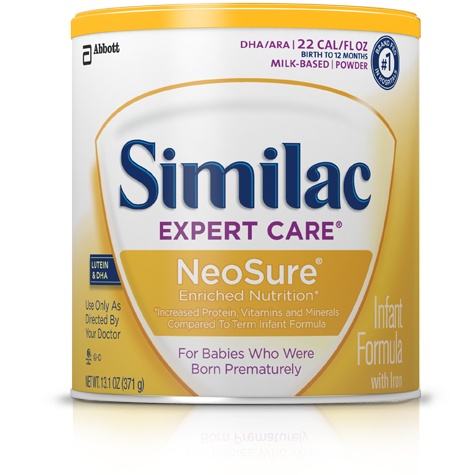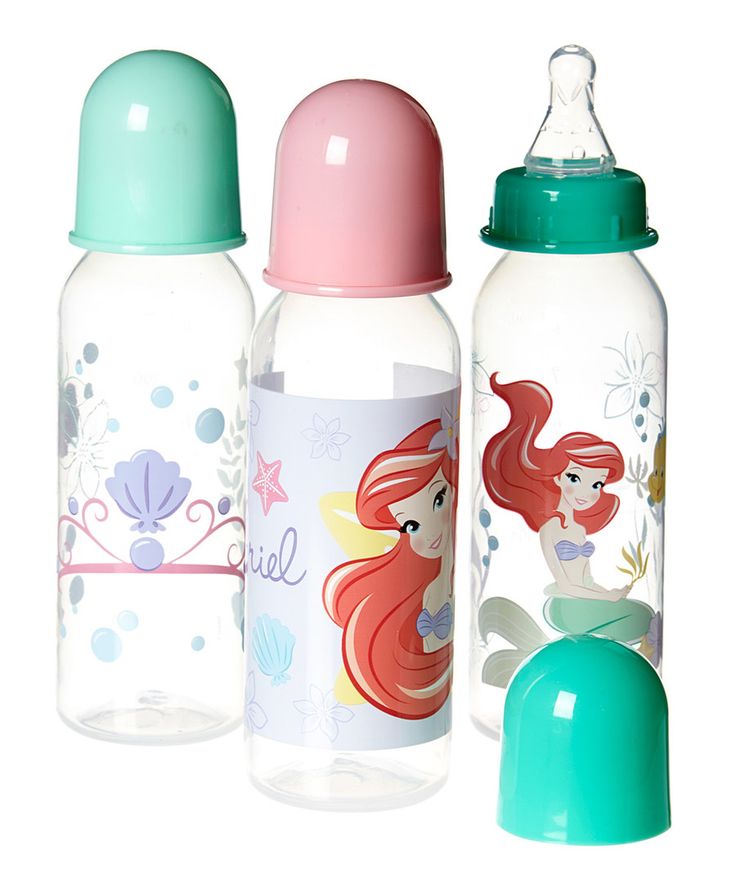High calorie baby food puree recipes
How to Make High Calorie Baby Food
Share this post:
888 shares
Jump to RecipeI've been making homemade pureed high calorie baby food for almost two years for my extremely picky eater son to supplement his diet and make sure he gets the nutrition and calories he needs. Let me share my baby food recipe and tips with you!
As always, please work with your doctor to determine what's best for your baby instead of solely relying on information you find online. I am not a nutritionist or a pediatrician, I'm just a mom sharing my experiences in the hopes of helping others.
If this is your first time here, you can read more about our story. But long story short, my son Elliot was not interested in table foods and for a while the only food we could get him to eat was pureed baby food. Baby food was also the only way we can get nutritious fruits and vegetables into him for the longest time.
Elliot has been struggling to stay on the growth chart (read more about his struggle with weight gain), so I've had to make sure that every bite of food he eats has as much nutrition and calories as possible.
I've been making homemade high-calorie baby food ever since Elliot started eating pureed baby food. Even now that he is a toddler, I still make these pouches for him daily to make sure he gets lots of nutrients from different fruits, veggies, nuts, and healthy proteins that he otherwise doesn't eat on his own.
I also make a pureed vegetable soup for him, check that out too: Vegetable Soup Recipe for Picky Toddlers
Related recipe: Homemade Yogurt Melts
Why I make homemade baby food:
- There isn't much variety in baby food available where we live (on Grand Bahama Island), and none of it comes in convenient pouches
- I like to cook and make our meals from scratch, so why not do the same for my son?
- I want my son to get a variety of nutrients from different fruits, vegetables, nuts, and proteins
- I love using my blender
- I want my son to eat the freshest foods possible
- Homemade baby food is much more affordable than store-bought
- Homemade pureed food is a great way to supplement an older baby's or a toddler's diet and can be a great help for picky eaters.
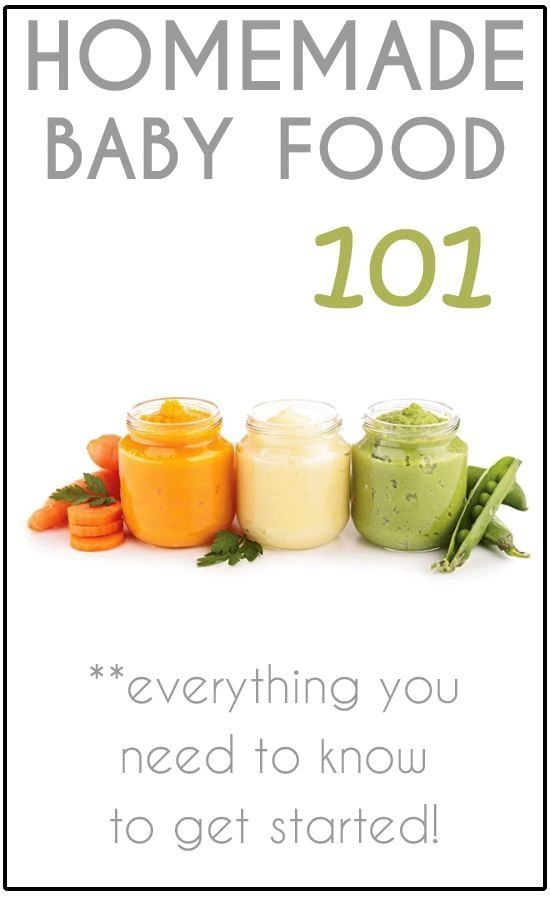 I add fruits, vegetables, beans, and nut butters that my son doesn't like to eat on their own.
I add fruits, vegetables, beans, and nut butters that my son doesn't like to eat on their own.
and the biggest reason of all that I make homemade baby food:
- Elliot needs more calories than store-bought baby food contains
It was always a challenge getting Elliot to eat a whole meal in one sitting, so we needed to feed him the best calorie dense foods for babies.
So I made baby food by pureeing fruits and vegetables (and a few other healthy high-calorie ingredients) in my beloved Blendtec blender.
The homemade baby food I make has about twice the calories of store-bought baby food spoon-for-spoon. Most store-bought containers and pouches have about 50-100 calories. The baby food that I make typically has 125 - 200 calories per pouch.
This means that even if Elliot decided he was done with food halfway through his meal, he would still be getting substantial calories from those few spoonfuls. Follow that up with some Cheerios or Goldfish crackers, or a bottle of milk if we're lucky, and I would consider that a successful meal.
Follow that up with some Cheerios or Goldfish crackers, or a bottle of milk if we're lucky, and I would consider that a successful meal.
Printable Instructions for How to Make Nutritious High Calorie Baby Food
Click the image below to get access to the free printable PDF file with instructions for how to make your own baby food. You should still read all the detailed tips below, but these visual instructions are very useful to have in your kitchen so you can refer to them when needed.
What are the best ingredients for high calorie baby food?
Banana, avocado, healthy oils, baby cereal, and nut butters (once you get the OK from your doctor) are typically recommended high calorie foods for baby weight gain.
The formula below makes about 10 ounces of baby food puree, or about two large pouches. Keep reading below on more info on how to store the baby food, and for a printable recipe card with instructions on how to blend the baby food (what to add first, what to add last).
- Start with the base: banana. A medium-large banana has 100 calories in it. That's a GREAT start.
- Add the calorie-bomb healthy fat: 1 tablespoon of avocado oil or light-tasting olive oil (120 calories). Our doctor gave us the okay to add oil to the baby food purees. Other great options are 1-2 tablespoons of almond butter, cashew butter, or peanut butter. The nut butters have almost 200 calories per two-tablespoon serving and they taste delicious when blended with banana! Just make sure that your baby is not allergic to nut butters (read about allergy testing in babies).
- Add 2-4 tablespoons of baby oatmeal cereal. That's 30-60 calories. Baby oatmeal tastes fairly neutral so it works great in any baby food recipe. Just remember that oatmeal thickens with time, so always make the puree a little more liquid than you would like - it will get thicker in a day or two. The reason I prefer oatmeal is that it is a more nutrient-dense grain than rice, plus there is some controversy about arsenic in rice.
 I figure, let me just be safe.
I figure, let me just be safe. - Add other fruits or veggies - about a cup total - enough to make about 1 and a quarter cups of pureed baby food total. These ingredients don't add many calories but they do add a lot of nutritional value. Some of the combinations that work well for us are:
- frozen cherries + steamed green beans (you can't taste the green beans!)
- blueberries
- strawberries + kiwi (make sure your kid isn't allergic to either, as it's a fairly common fruit allergy)
- ½ apple + steamed carrots
- applesauce + few teaspoons of avocado
- papaya
- peach + 1 teaspoon pea protein powder
- plums + corn
- pear + steamed spinach (Elliot gets hives from raw spinach)
- mango + steamed broccoli (you really need two strong-tasting fruits to hide the broccoli flavor, so banana + mango work well)
- pineapple + cooked peas
- raspberries
- Please note that blueberries, papaya, and cherries make the baby food uh, coagulate, for lack of a better word.
 They're fine to use if you'll serve the pureed food to your child immediately, but they make the food have a weird texture on Day 2. It's fine to eat, but it just doesn't feel as good in your mouth. You can always re-blend the leftover food with a bit of juice and it will be smooth again.
They're fine to use if you'll serve the pureed food to your child immediately, but they make the food have a weird texture on Day 2. It's fine to eat, but it just doesn't feel as good in your mouth. You can always re-blend the leftover food with a bit of juice and it will be smooth again.
- Other high-protein additions: I already mentioned the pea protein powder above. Sometimes I add a few tablespoons of cooked white beans, chickpeas, or even plain chicken breast. Yes, if you have a powerful enough blender, it will puree the chicken so that you won't taste or feel it.
- Optional: Add a few splashes or orange juice or soy milk (or any vegan milk substitute). If the puree seems a little too thick, I add a splash of orange juice or soy milk, depending on what else is in the puree. For example, orange juice works great with pineapple, papaya, apples, and pears. Soy milk works well with cherries, raspberries, peaches.
 The reason I say to use a vegan milk is that it doesn't go bad as quickly as cow's milk, so the pouches don't turn funky if it takes him 2-3 days to eat them. Also, Elliot has an allergy to cow's milk (read about allergy testing in babies).
The reason I say to use a vegan milk is that it doesn't go bad as quickly as cow's milk, so the pouches don't turn funky if it takes him 2-3 days to eat them. Also, Elliot has an allergy to cow's milk (read about allergy testing in babies). - Optional: Honey. I admit, some of these combinations don't sound that appealing. However, babies eat some weird stuff without getting grossed out. They don't know that chicken and raspberries don't go together. Elliot eats all of these combinations just fine, as long as everything is pureed super smooth. That said, if you feel like your concoction doesn't taste that great, it's nothing that a teaspoon of honey can't fix. If your kid is older than 1, you can add a little honey to the baby food to make it sweeter and pulse it in the blender a few seconds. I've only had to do it once, when the banana and pear that I used just weren't ripe enough.
Luckily Elliot likes the banana flavor! I try to rotate through the other fruit and vegetable ingredients so that he is exposed to different flavors all the time and is always getting a variety of nutrients.
If your baby doesn't like banana or is allergic, just use apple sauce or pears as the base for the puree.
Obviously, check with your pediatrician to make sure your baby is allowed to eat all of these ingredients.
I try to throw in a vegetable in there whenever I can. Spinach is pretty inoffensive and unnoticeable in flavor (babies don't know that green = healthy!) so that's a good one to put into baby food.
You might need to start slow with adding some of these in, just because they will have an effect on the flavor of the purees. For example, my son only likes about a teaspoon or two of beets, avocado, or corn. Start little by little, and add more vegetables and less fruits over time to get your baby to eat more vegetables.
I add a teaspoon of pea protein powder whenever I feel like Elliot is not eating enough protein. That stuff does have a flavor, so I usually don't put more than a teaspoon.
Storing homemade baby food:
I always puree enough fruits/vegetables to make 2 large baby food pouches. Any more and I risk the food going to waste because Elliot doesn't finish it within 2-3 days.
Any more and I risk the food going to waste because Elliot doesn't finish it within 2-3 days.
I use these reusable pouches from ChooMee to store the homemade baby food in the fridge and I absolutely love them. They are easy to wash with the same bottle brushes that I use to wash Elliot's bottles.
The reason I use pouches instead of containers is that the baby food stays fresh in the pouches for longer since it's exposed to less air. Reusable pouches are perfect for baby food that contains bananas, pears, and apples - fruits that turn brown when exposed to air.
These pouches hold 5 oz of baby food - a bit more than store-bought food. At first, 5 oz was too much for Elliot, but now that he is a year and six months I can easily give him 5 oz of food at a time.
I also love using pouches because when Elliot decides to suck on the pouch he ends up eating more food faster. Usually he still prefers to be fed with a spoon and refuses to suck on the pouch, but the times that he does point to the pouch and open his mouth make for a really easy feeding.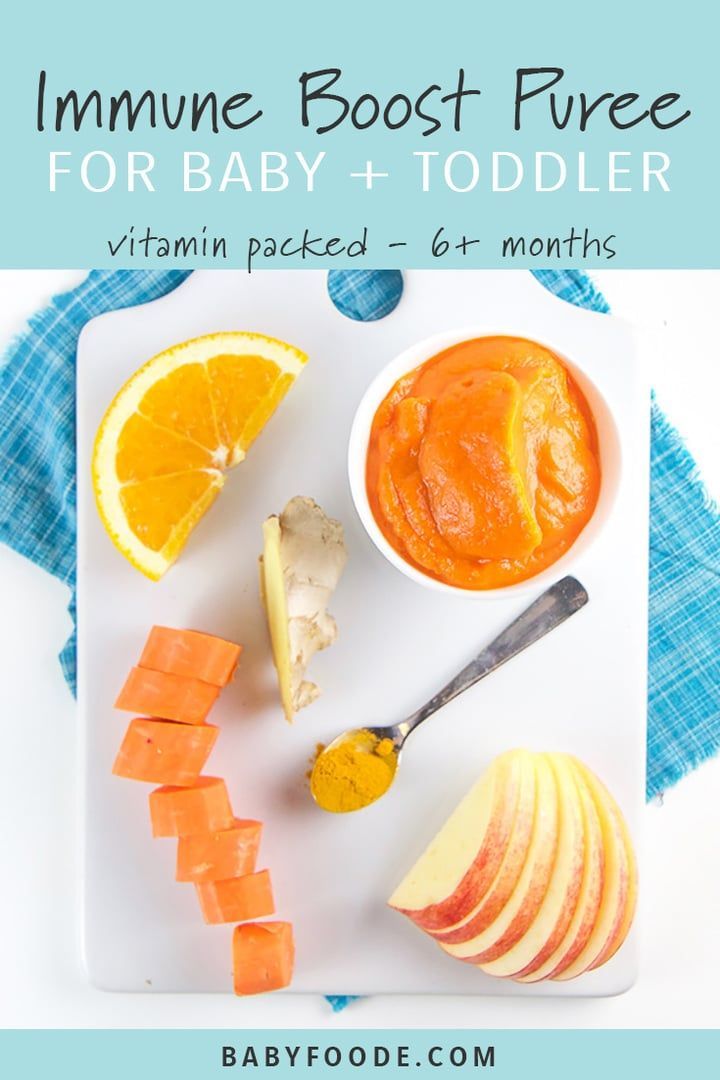 And I'll take any help I can get!!
And I'll take any help I can get!!
What you'll need to make baby food:
- A high-power blender. If your kid is anything like my kid, they will not tolerate any kind of chunks or textures in their baby food purees. This means that everything has to be super smooth - seeds and peels need to be liquefied. I absolutely love my Blendtec blender for this. It's pricey, but it's high quality. And honestly, it has paid itself off by now, considering how much money I saved not buying baby food. Blendtec blenders go on sale often, so check back regularly and maybe you'll be able to snag one at a good price!
By the way: if your child is picky about textures of food, they might benefit from sensory play. I created a list of 52 different sensory activities, one for every week of the year. Many of the activities are geared towards picky eaters. Learn more about it and join us for a whole year of sensory play: 52 Weeks of Sensory
- Set of measuring cups and spoons.
 You definitely need the spoons to measure out the oil and protein powder - you don't want to go overboard with these! And the measuring cups help with making sure you don't add too much - though you probably won't even need them after you get a good feel for it. You don't want to make too much baby food at once and have it go to waste if your baby is not devouring these pouches quickly. This is why I recommend making just enough for two pouches. Bonus: These make GREAT baby toys to keep the little ones busy while you're making their food.
You definitely need the spoons to measure out the oil and protein powder - you don't want to go overboard with these! And the measuring cups help with making sure you don't add too much - though you probably won't even need them after you get a good feel for it. You don't want to make too much baby food at once and have it go to waste if your baby is not devouring these pouches quickly. This is why I recommend making just enough for two pouches. Bonus: These make GREAT baby toys to keep the little ones busy while you're making their food. - Reusable pouches. As I said above, these ChooMee ones are great. They hold 5 oz of food, they're easily washable, and they are freezable as well!
- Baby food containers. You can also use baby food containers, if you prefer. I just use regular 4 oz Rubbermaid containers. They are great because the lid fits tight and they are spill proof.
 Plus they are actually useful for other things too, like packing salad dressing to work or packing bits of table food for Elliot to eat.
Plus they are actually useful for other things too, like packing salad dressing to work or packing bits of table food for Elliot to eat. - Silicone spatula. This is to make sure you scrape out every last bit of baby food from the blender. Hey, if I am painstakingly counting the calories I am adding to the blender, I better get all the baby food puree out of that blender!! By the way, these colorful ones also make great baby toys! Just make sure they don't put the pointy end in their mouth. (That was never an issue for Elliot, who never put anything in his mouth haha).
- Optional: Kitchen scale. If you are obsessive with counting like me, you'll want to know exactly how much of each ingredient you're adding. When I first use a new ingredient, I typically weight it out so I can then google how many calories are in a 2-oz carrot, per se. I also use it all the time to measure out how much pasta to cook for Elliot, so I can keep track of his calorie intake.
 This one is nice and sleek, so it won't take up too much precious kitchen space.
This one is nice and sleek, so it won't take up too much precious kitchen space.
This baby food "recipe" has been working for us for almost a whole year now. That's not to say that Elliot eats a full pouch every time. Sometimes we still struggle getting him to sit in his high chair, or we might have to put on Elmo's World to distract him a little while eating.
But these homemade baby food purees are what helped Elliot gain weight. As he is growing and slowly trying new foods, he is eating less of them. But he still has one pouch per day, and it's a large portion of his calorie intake. On top of that, I am able to use the homemade baby food to supplement his eating by using ingredients that he would normally not eat if they were put on his dinner plate.
Prep Time 5 minutes
Cook Time 5 minutes
Total Time 10 minutes
Ingredients
- 1 Banana
- 1 cup other fruits or veggies (see notes)
- 1-2 tablespoons healthy fat, such as avocado oil, almond butter, cashew butter, or peanut butter
- Optional protein add-in: 1 teaspoon pea protein powder, cooked chickpeas, white beans, or chicken breast
- Optional add-in: baby oatmeal
- Optional add-in: splash of orange juice or soy milk
Instructions
- Break the banana into 3-4 chunks and place it in a blender.
 Add 1 cup fruits or vegetables (see notes), and process until smooth. Add 1-2 tablespoons of the healthy fat and optional protein or oatmeal add-in, if using. Process until smooth - you might need to scrape down the mixture with a spatula a few times. If the mixture seems too thick, add a splash or juice or vegan milk and process until smooth.
Add 1 cup fruits or vegetables (see notes), and process until smooth. Add 1-2 tablespoons of the healthy fat and optional protein or oatmeal add-in, if using. Process until smooth - you might need to scrape down the mixture with a spatula a few times. If the mixture seems too thick, add a splash or juice or vegan milk and process until smooth. - Pour into small resealable containers or re-usable baby food pouches, use a spatula to get all the baby food out of the blender. Serve immediately or keep refrigerated for up to 48 hours.
Notes
Some ideas for additional fruits and veggies to use:
- frozen cherries + steamed green beans (you can't taste the green beans!)
- blueberries (purees made with blueberries are best served fresh, since it thickens over time. If it thickens, just stir in a splash of juice the next day)
- strawberries + kiwi (make sure your kid isn't allergic to either, as it's a fairly common fruit allergy)
- ½ apple + steamed carrots
- applesauce + few teaspoons of avocado
- papaya
- peach + 1 teaspoon pea protein powder
- plums + corn
- pear + steamed or fresh spinach
- mango + steamed broccoli (you really need two strong-tasting fruits to hide the broccoli flavor, so banana + mango work well)
- pineapple + cooked peas
- raspberries + cooked beets
Recommended Products
As an Amazon Associate and member of other affiliate programs, I earn from qualifying purchases.
-
Blendtec blender
-
Reusable pouches
-
Avocado oil
-
Storage containers
-
Spatulas
Nutrition Information:
Yield:
2Serving Size:
1Amount Per Serving: Calories: 157Total Fat: 8gSaturated Fat: 1gTrans Fat: 0gUnsaturated Fat: 6gCholesterol: 0mgSodium: 4mgCarbohydrates: 22gFiber: 4gSugar: 11gProtein: 3g
Tell me: Do you make your own baby food? What do you put in it?? What's your baby's favorite food?? I want to hear it all! Let me know in a comment below.
Share this post:
888 shares
Top 50 Weight Gain Recipes for Babies Under One
If you’re looking for ways to include high calorie foods in your baby’s diet, check out these healthy and easy Weight Gain Recipes for Babies Under One.
50 Weight Gain Recipes for Babies Under One
Buy Healthy Nutritious Baby, Toddler food made by our own Doctor Mom !
Ever since I started this blog, weight has been the number one concern with Moms – not their own weight, but their baby’s! Whatever the child’s age, this one problem has been constant, and while we’ve already shared lots of information regarding expected baby weight and weight gain, there were still queries regarding what to feed the baby.
The result of these questions was ‘The Chubby Cheeks Cookbook‘, an exclusive book on recipes for weight gain from babies to toddlers. Besides these, we also have a range of nutritious weight gain products in our store, specifically designed with babies and young children in mind. And now to give you an extra hand, we’ve drawn up a list of 50 weight gain recipes for babies under one, including healthy weight gain foods in different formats, so you can make whatever your baby is likely to enjoy.
Important: Please follow the age recommendations on each recipe and avoid salt, sugar, honey or cow’s milk for babies under one. When trying to increase your baby’s weight, please use our standardized weight charts to ensure that your baby is indeed underweight, else you may be setting the stage for obesity in later life. In case of severely underweight babies, please consult your pediatrician to rule out any medical concerns.
(The following recipes are suitable for babies aged 6 months and above)
1. Apple puree is a popular choice for weaning babies and when combined with pear into an Apple and Pear Puree, it becomes a naturally sweet and healthy weight gaining recipe.
2. Bananas are an excellent choice for weight gaining as well as for regulating bowel movements. This Apple and Banana Puree from Parent Guide combines the benefits of apples and bananas in one dish.
3. You can’t go wrong with this Green Peas and Potato Puree, where two weight gaining super foods come together to create a nice, creamy mash. Peas are rich in protein, calcium and iron while potatoes are an excellent source of potassium.
4. Pumpkins have a natural sweetness to them which is why they’re popular with babies! Try out this Pumpkin Puree recipe to make the most of this interest and add on some healthy calories.
5. This Ragi Flakes Porridge is a great weight gaining recipe for babies over 6 months, as long as you skip the sugar. Instead, opt for fruit purees or applesauce to sweeten the porridge naturally.
6. Our grandmothers did something right when they fed us porridge made of Raw Kerala Banana Powder! Packed with carbohydrates and potassium, this is something that is a must have for babies over 6 months.
7. One of the most popular traditional baby foods, Sathumaavu Porridge is the perfect way to add calories to baby’s diet along with loads of nutrients and healthy fats.
8. When your baby is ready for some texture in her food, opt for this Ghee Rice recipe that’s easy to make, easy to feed and versatile enough to customize with vegetable puree or chicken puree.
(The following recipes are suitable for babies aged 7 months and above)
9. While ragi in itself is a nutritious and weight gaining food for babies, adding moong dal to the mix takes it a notch higher. Try out this Ragi Moong Dal porridge to get the benefits of both ingredients.
10. We know that green peas are a good idea for adding calories to your baby’s diet, so why not make it better by feeding her this Buttered Peas Puree from Archana’s Kitchen?
11. Pumpkins are easily available in all Indian states, and are a household favorite. Make it your baby’s favorite too by feeding her this nutritious Pumpkin Soup. Be sure to skip the salt and add some spices instead.
12.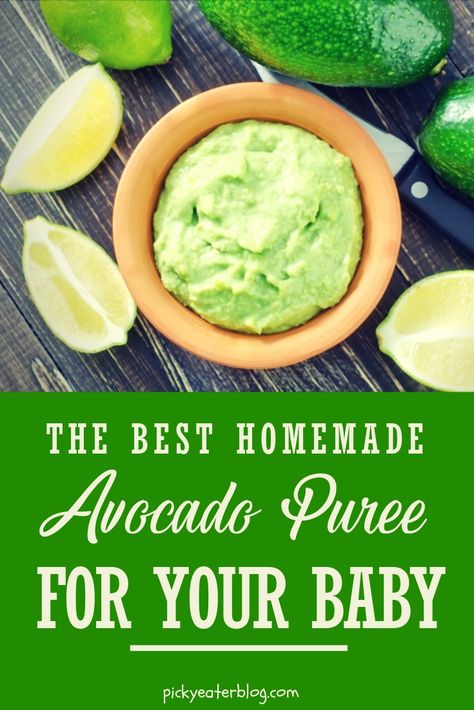 These Sooji Potato Pancakes from Yummy Tummy Aarathi are soft, yummy and perfect for weight gaining in babies. You can skip the veggies for young babies and avoid the salt completely.
These Sooji Potato Pancakes from Yummy Tummy Aarathi are soft, yummy and perfect for weight gaining in babies. You can skip the veggies for young babies and avoid the salt completely.
13. Need a healthy breakfast recipe that’s both nutritious and will keep baby full for a while? Check out this Banana Oats Pancake recipe that combines weight gaining foods like Kerala bananas and oats.
14. When your baby is ready for finger food, make these Multigrain Pancakes or Adai Dosa and break it into small pieces. Just be sure to avoid the salt and make the pancakes soft enough for baby to chew with her gums.
(The following recipes are suitable for babies aged 8 months and above)
15. If you have kids at home, then a jar of Dry Fruits Powder is a must have! You can add this nutritious mix to practically any dish – porridge, kheer or smoothies – and it’ll only add to the flavor, healthy calories and nutrients.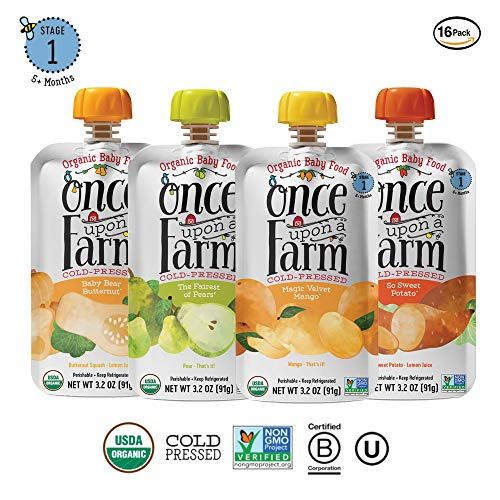
16. Besides banana puree or applesauce, Dates puree is also an excellent way to sweeten baby food, while also adding those valuable healthy calories. Check out the recipe from Yummy Tummy Aarathi to make this versatile puree.
17. Potatoes and cheese are both considered healthy weight gaining foods for babies, and they come together in this yummy Potato Cheese Mash recipe from Bumps and Baby!
18. If your baby likes paneer, this Paneer Vegetable Puree is an excellent way to sneak in some veggies! Just make sure to cook the paneer and vegetables just right so you don’t end up with rubbery paneer and mushy veggies!
19. Apple and chicken make a nice, flavorful combination, and is popular with young kids. Bumps and Baby have taken this combo and added sweet potato, making this Chicken, Apple, Sweet potato mash a deliciously healthy recipe.
20. Many Moms have trouble feeding their babies eggs, but this Egg Yolk, Avocado and Sweet Potato Puree from Buona Pappa should solve that problem, since it’s so creamy and hearty!
21. Dal is quite an underrated food in most Indian homes, but it’s a great way to add some protein to your baby’s diet, especially if you’re vegetarian. Check out this simple Dal and Vegetable Mash from Tarla Dalal which can be customized with your choice of veggies.
Dal is quite an underrated food in most Indian homes, but it’s a great way to add some protein to your baby’s diet, especially if you’re vegetarian. Check out this simple Dal and Vegetable Mash from Tarla Dalal which can be customized with your choice of veggies.
22. If your baby is ready for some desi food, we’d recommend this mildly spiced Indian Chicken Puree – her first step into the world of curries! Keep it a little chunky for older babies to practice chewing.
23. If your baby is a fan of food that’s less spicy and on the sweeter side, this Chicken and Apple Puree from Buona Pappa may be a better hit with her. The combination of apples and chicken adds protein, nutrients and of course, healthy calories!
24. This Strawberry Chia Seeds Oatmeal from Baby Foode is a ‘loaded’ oats dish, containing oats, strawberries and the calorie and protein-rich chia seeds! Skip the honey and opt for date syrup instead.
25. Tarla Dalal creates a winner of a weight gaining recipe by combining jowar, ragi and dates in a protein, calcium and iron-rich Jowar Ragi and Date Porridge. This makes a great breakfast to start baby’s day on a healthy note.
26. If you’re looking for finger food recipes that also contribute to weight gain, these Egg Yolk Ragi Pancakes are a good choice. Packed with protein-rich ragi and eggs, these pancakes are a breeze to make and soft enough for young babies to munch on.
27. These Herbed Potato Bites aren’t just a great finger food for young babies, they’re also a good snack for kids while watching TV or lazing around! They’re easy to make and are a healthy alternative to French fries. Just skip the salt when making for babies.
28. If you’d like a snack that’s a little more hearty, try these Pan Fried Paneer Cubes. The best part is that these can easily be customized to suit your baby’s taste.
29. This Mixed Vegetable Soup is an excellent way to ensure your baby gets all her nutrients, hydration requirements and calories in one go, especially in summers when she’s not in a mood to eat much. Skip the salt so your little one can eat it without trouble.
30. Add some protein to your regular vegetable soup by including dal in it. Our Vegetable Moong Dal Soup is filling enough to make for a full meal, and not just a soup to begin your dinner!
31. Khichdi is something Moms all over India make, at some point or the other. When making for your baby, try this Oats Khichdi that’s a welcome savory change from regular sweet oatmeal or porridge.
32. This Broken Wheat Moong Dal Khichdi from Archana’s Kitchen is a filling meal that’s perfect for helping baby sleep well all night after dinner! The ghee increases the heartiness of the meal while adding calories.
33. Kerala bananas aren’t good just in powdered form – the ripe version is also ideal for weight gaining! This Kerala Banana Ghee Fry from GK Food Diary is easy to make, with just ghee and bananas for babies under one year.
34. Tarla Dalal has the perfect balanced meal in this Oats Vegetable and Brown Rice Khichdi. Using the pressure cooker, you can cook it to make it as mushy as you like. Skip the salt, with everything else, the babies won’t miss it!
35. Here is an easy Banana Omelette recipe that gives your baby a naturally sweet breakfast option! For older babies, you can try serving this with a dosa for a good dose of carbohydrates too.
36. You’ve tried a fruit omelette, now it’s time to go for a vegetable omelette! The best part about this Egg Yolk Vegetable Omelette is that you can customize it any way you want, making it a light snack or a full fledged meal.
37. It’s not just food that can help in weight gain, drinks can too! The Lemon Bowl has a delicious looking Avocado Blueberry Baby Smoothie that contains multiple weight gain ingredients like avocado, oats yogurt, flax seeds and more!
38. Did you ever think you could make muffins with just three ingredients? Well, Healthy Little Foodies have done it, with their Fruity Egg Muffins recipe, perfect for babies over 8 months!
39. If your little one is constantly eyeing your plate and trying to grab your food, it’s time to give her a treat! These Sweet Potato Banana Bites from The Lean Green Bean are delicious, gluten-free, dairy-free and sugar-free.
If your little one is constantly eyeing your plate and trying to grab your food, it’s time to give her a treat! These Sweet Potato Banana Bites from The Lean Green Bean are delicious, gluten-free, dairy-free and sugar-free.
40. If your baby liked the recipe above, here’s another one you can try – Carrot Oat energy balls from My Kids Lick the Bowl. With ingredients like oats, sunflower seeds, dates and carrots, these balls are little powerhouses of nutrition and healthy calories!
41. Little one clamoring for dessert! Feed him a nice and thick Ragi Banana Halwa, specifically designed for babies under one! This recipe has no sugar, salt, honey or cow’s milk, containing only natural goodness with ragi and banana.
42. This Avocado Cream Dessert from Homemade Baby Food Recipes is something that will tempt adults too! With the natural creaminess of avocado and banana, this desert is perfect served chilled or frozen in summer.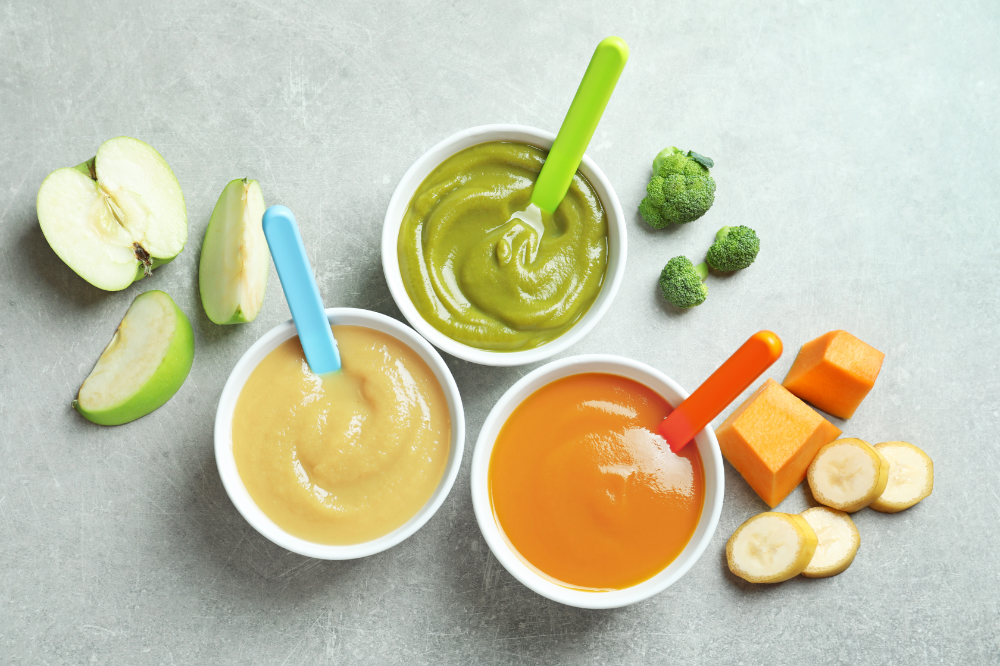
43. Kheer doesn’t have to be a festive treat – this Oats Kheer recipe is something your baby can have every day! Packed with the weight gaining benefits and nutrients of oats, this is much more than a simple dessert.
44. When it gets hot, baby needs something to cool her down, and this Mixed Fruit Ice Cream from Homemade Baby Food Recipes is a good choice! Customize it to include the fruits you like, but we think avocados and bananas are a must have!
(The following recipes are suitable for babies aged 10 months and above)
45. If you’d like a simple meal that’s easy and comforting for baby when she’s not in the mood for anything new, then this Vegetable Dalia Khichdi is your best bet!
46. Get your little one used to eating greens on a daily basis by trying out this Green Khichdi recipe from Evergreen Recipes! Packed with green peas and potato, this is a super weight gaining recipe! Skip the salt for babies under one.
47. Store bough biscuits and cookies are never a good idea for a snack, especially when you can easily make them at home! These Sathumaavu Veggie Crackers are made of real veggies and you can skip the salt and baking soda for your baby.
48. If the whole family’s enjoying a Chinese meal, don’t let baby feel left out! Offer her this Paneer Vegetable Fried Rice that’s got protein from paneer, carbohydrates from rice and nutrients from vegetables.
49. Once your baby is used to plain chicken puree, you can start introducing her to a combination of flavors, like this Chicken Vegetables Meal from Made for Mums.
50. Not all puddings have to be laden with sugar! This Egg Pudding is a sugar free recipe that’s perfect for babies under one. So now they can enjoy a healthy treat and maintain their weight at the same time!
You may also like to check out these posts:
14 Egg Recipes for Babies
65 Healthy Dates Recipes for Babies
35 Ragi Recipes for Babies and Kids
25 Easy Oats Recipes for Babies and Toddlers
25 Banana Recipes for Babies Under One Year
Buy Healthy Nutritious Baby, Toddler food made by our own Doctor Mom !
Shop now!Baby puree at home: recipes
Baby puree from vegetables and fruits at home: cooking secrets
Vegetable and fruit puree often becomes the first meal of the baby after breast milk or formula, so many mothers prefer to cook it on their own. Although modern manufacturers convince us that baby food is devoid of preservatives and harmful additives, fresh vegetables and fruits are much healthier, especially when it comes to infant nutrition. Yes, and cooking baby puree at home is not so difficult. nine0005
Although modern manufacturers convince us that baby food is devoid of preservatives and harmful additives, fresh vegetables and fruits are much healthier, especially when it comes to infant nutrition. Yes, and cooking baby puree at home is not so difficult. nine0005
Vegetables or fruits?
Let's try to make baby puree for our beloved baby. Despite the fact that pediatricians of the last century recommended starting complementary foods with fruits, it is better to first introduce the child to vegetables - modern doctors and nutritionists have come to this conclusion. Boiled vegetables do not irritate the gastrointestinal tract, are better absorbed, satisfy hunger, do not cause allergies and increased gas formation. In addition, vegetables do not contain fructose, which irritates the pancreas. And one more weighty argument in favor of the fact that it is better to start with vegetables - fruits are tastier, and if the baby tries them first, he will refuse vegetables, because they will seem to him more insipid. nine0005
nine0005
How to prepare baby vegetable puree
What can baby puree be made from? The ideal puree for the first feeding is from cauliflower or zucchini. A little later, you can introduce pumpkin, broccoli, carrots, potatoes and green peas. Before cooking, vegetables are washed well, peeled, cut into pieces and cooked - steamed, in the oven or in the usual way, in water. The first two methods are preferable because oven roasting and steaming preserve the vitamins, minerals, nutrients, and natural color in the vegetables. And most importantly - such vegetables are much tastier. Some nutritionists recommend boiling vegetables with their skins on before peeling them, so choose your own cooking method. nine0005
If you do have to cook vegetables in a saucepan, use an enamel pot, add less water and put the vegetables in boiling water. Boil until soft, but do not overcook vegetables and fruits, otherwise they will become tasteless and lose a lot of vitamins. Ready vegetables are chopped with a blender until smooth and slightly diluted with water, vegetable broth, breast milk or mixture to a gruel state, since the child does not yet know how to digest thick food. Small pieces of vegetables in puree sometimes cause the baby to refuse to eat, so the knives in the blender should be well sharpened, and if there is no technique, you can grind the vegetables through a sieve. Salt and spices are usually not added to baby vegetable puree, and if the baby is more than 6 months old, you can put a little butter in the puree. nine0005
Small pieces of vegetables in puree sometimes cause the baby to refuse to eat, so the knives in the blender should be well sharpened, and if there is no technique, you can grind the vegetables through a sieve. Salt and spices are usually not added to baby vegetable puree, and if the baby is more than 6 months old, you can put a little butter in the puree. nine0005
A few rules for making baby puree at home
- Use only fresh vegetables and fruits.
- Water for cooking vegetables must be filtered or bottled.
- If you are using frozen foods, choose only whole fruits and vegetables as they retain the most nutrients.
- All utensils for preparing baby food should be perfectly clean, so if the knife falls on the floor, it should be washed well. Also, the presence of pets in the kitchen during the cooking process is not allowed. nine0026
- Avoid vegetables and fruits high in nitrates, such as spinach, lettuce, beets, melons, and watermelons, in infants' diets.

- Store-bought vegetables are recommended to be soaked in water to remove nitrates: 1-2 hours for this, up to 24 hours for potatoes.
- Mix sour-tasting fruits and berries with sweet fruits - for example, blackcurrant goes well with a banana or pear. Sour puree is unlikely to please the baby. nine0026
- Give your child only fresh food, but yesterday's puree from the refrigerator is better to eat yourself.
DIY fruit puree for children
Children are more likely to eat fruit puree, because fruits are tastier and sweeter. Fruits contain a large amount of vitamins, minerals, trace elements, fiber and antioxidants, so they are very useful for a growing body. However, fruits are strong allergens, especially berries, bananas, pomegranates and apricots, so they should be given with caution, watching the child's reaction. The most low-allergenic fruits are apples and pears, so it is better to start complementary foods with them, and then introduce all other fruits.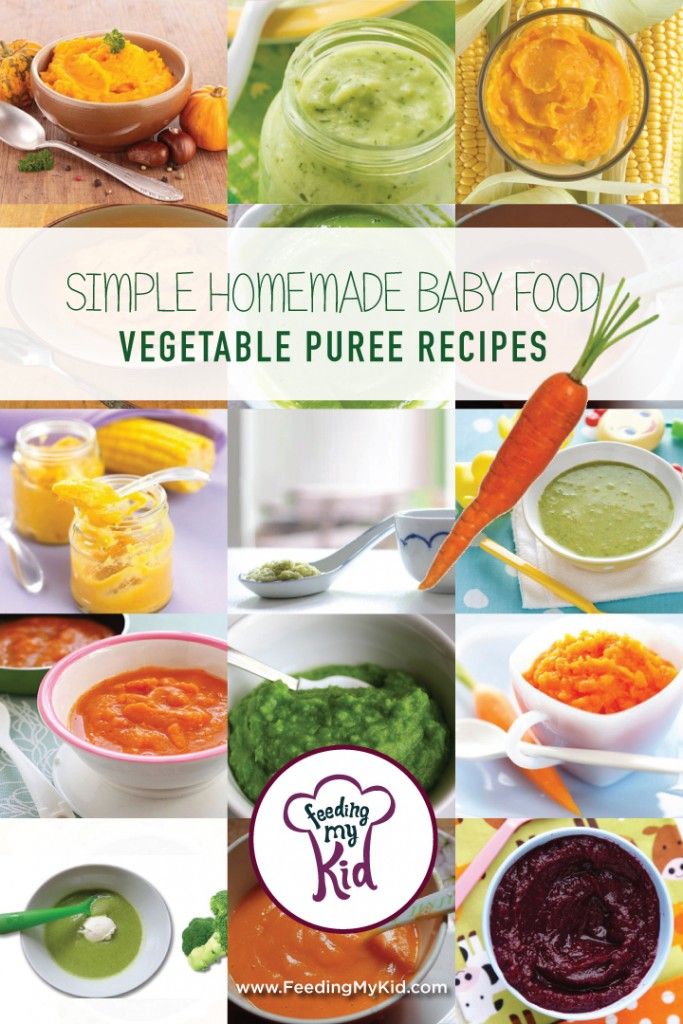 First, the baby is fed with a one-component puree made from only one product, and then you can mix different vegetables and fruits, and not only among themselves. Very tasty combinations of fruits and vegetables, such as apples and zucchini, pumpkins and pears. nine0005
First, the baby is fed with a one-component puree made from only one product, and then you can mix different vegetables and fruits, and not only among themselves. Very tasty combinations of fruits and vegetables, such as apples and zucchini, pumpkins and pears. nine0005
Fruits must be of good quality, without damage, ripe and juicy, and the rules for preparing fruits do not differ from the rules for cooking vegetables. Naturally, fruit puree is not sweetened with honey and sugar - the later the child learns the taste of sugar, the stronger his health will be.
Aromatic pumpkin puree
Babies love to eat pumpkin because of its pleasant sweet taste, besides pumpkin is very healthy. It contains a whole storehouse of various vitamins, including vitamin T, which normalizes the metabolism in the body. For pumpkin puree, small pumpkins are suitable, since large fruits are not as tasty and difficult to peel. nine0005
Cut the pumpkin in half, and then into small slices, one or two of which (depending on the appetite of the crumbs) cut into cubes. Boil the pumpkin in a double boiler or in water for 20 minutes, while warm, beat with a blender to a smooth puree and dilute if necessary with water or a mixture. Add oil and salt depending on the age of the child.
Boil the pumpkin in a double boiler or in water for 20 minutes, while warm, beat with a blender to a smooth puree and dilute if necessary with water or a mixture. Add oil and salt depending on the age of the child.
Gentle Broccoli Puree
One of my favorite homemade baby puree recipes is broccoli. This cabbage is extremely useful because it contains potassium, iron, calcium and other valuable substances. It has much more vitamin C than lemon, and the reason for its nutritional value is its high protein content. nine0005
Separate the broccoli into florets, wash thoroughly and steam for 20 minutes. Cabbage cooks faster in water - fresh broccoli will take 7 minutes, and frozen - about 15 minutes. Broccoli puree does not need much water, it should lightly coat the vegetables. After the cabbage becomes soft, chop it in a blender or pass through a sieve. If you're making mashed potatoes for kids older than a year old, be sure to add butter - the little ones will gobble up broccoli on both cheeks! nine0005
How to make baby pear puree at home
Pear is a very delicate, tasty and healthy fruit that rarely causes intolerance. In addition to the high vitamin value, the pear has other beneficial properties - it facilitates digestion and removes toxins from the body.
In addition to the high vitamin value, the pear has other beneficial properties - it facilitates digestion and removes toxins from the body.
For baby food, choose green pears to reduce the risk of allergies, which are rare among babies. Peel the fruits from the peel and core with seeds, and then stew the pear in a bowl with a thick bottom in a small amount of water for 15 minutes. Let the pear cool slightly and puree it in a blender with a little of the remaining pear broth. For large kids, fruits can not be boiled, but add half a teaspoon of natural honey to the puree. nine0005
Zucchini and apple puree
Little gourmets will love this delicious puree, besides, zucchini is considered the most hypoallergenic vegetables, which, due to their high potassium content, have a beneficial effect on the heart. Apples contain iodine, iron and phosphorus, and due to the high concentration of vitamin C, apples help in the prevention of colds and viral infections.
Wash the zucchini and apples well, de-seed them, cut into pieces and cook in a saucepan for about 20 minutes, considering that the zucchini will cook 5 minutes faster. By the way, apples are steamed for 15 minutes, zucchini - 10 minutes. Next, vegetables and fruits are chopped in a blender, mixed and brought to a boil. For allergic children, this is the best side dish! nine0005
By the way, apples are steamed for 15 minutes, zucchini - 10 minutes. Next, vegetables and fruits are chopped in a blender, mixed and brought to a boil. For allergic children, this is the best side dish! nine0005
Exotic mango
Sometimes you can pamper your baby with exotic fruits - for example, make mango puree. This is a very delicate fruit with an original taste, containing 12 amino acids and improving sleep.
Choose only ripe fruits that are soft and reddish-yellow in color. Peel the mango from a thick skin and a large bone, put the pulp in a blender, add 2 tbsp. l. water and mash it, and then heat it in a saucepan for several minutes. For a baby up to a year old, it is better to give mashed potatoes with heat treatment to facilitate digestion, and older children can be fed raw mangoes. nine0005
Carrot and Potato Puree
Make normal potato puree without oil. Peel the carrots, grate them and stew them with butter and vegetable broth - about 1 tsp is required for 200 g of carrots. butter and 150 g of broth. When the carrot becomes very soft, wipe it through a sieve, and then put it on a plate, put mashed potatoes on the second half. Let the child choose whether to mix two types of puree for him or eat separately!
butter and 150 g of broth. When the carrot becomes very soft, wipe it through a sieve, and then put it on a plate, put mashed potatoes on the second half. Let the child choose whether to mix two types of puree for him or eat separately!
Pumpkin and apple puree
This sweet, sugar-free pumpkin-apple puree, cooked in a double boiler, is suitable for children who are already accustomed to “adult” food and are able to perceive a new unusual dish. It is better to take a pumpkin with a gray or green skin and with bright pulp - such fruits contain more vitamins and other useful substances. Apples are green because they have fewer allergens.
Cut pumpkin and apple flesh without peel or seeds into pieces, place in a steamer and cook for 20 minutes. Grind pumpkin, apples and raisins in a blender or by hand with a pusher if the child has already learned to chew. They say that this puree is very good for skin and hair, and you can check the truth of this statement yourself if you start feeding this dish to your baby.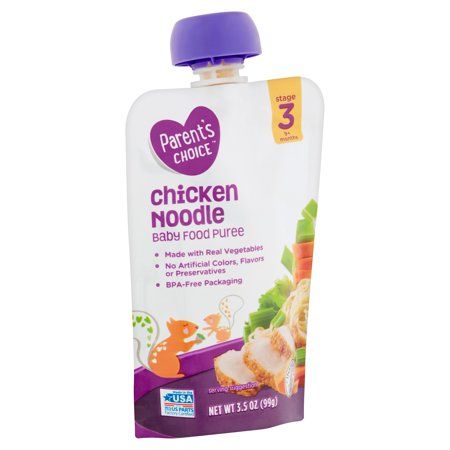 nine0005
nine0005
In autumn, you can take care of preparing vegetables for baby purees. Some vegetables, such as pumpkin, carrots and apples, are stored fresh, and zucchini, broccoli, berries are frozen in small portions, because due to frequent freezing and thawing, vegetables lose vitamins and become tasteless. You can roll up fruit and vegetable puree in jars, but this snack should not be given to babies. Remember that the taste of vegetables determines whether the baby will love them in the future, so try to prepare an appetizing and tender puree - for health and good mood! nine0005
Healthy side dish recipes Healthy Eating
Introducing tasty and healthy side dishes for lunch and dinner, from low-calorie mashed potatoes to hearty cereals like quinoa.
Recommended
Dinner quinoa with lettuce
Quinoa dish enriched with tomatoes, cucumbers, herbs and a simple lemon dressing. Arrange the salad on the endive leaves and top with tender avocado cubes.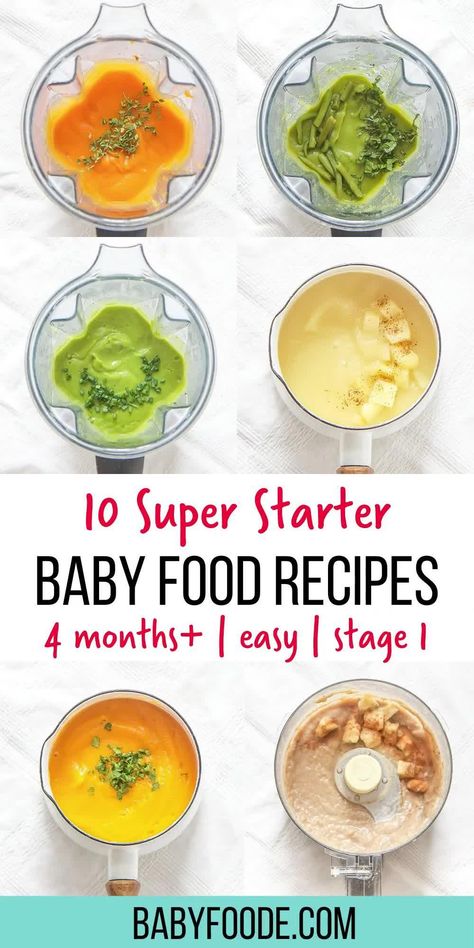
Recipe: Dinner Quinoa with Lettuce
Hasselbeck Baked Sweet Potato
Nicely sliced sweet potato, flavored with a mixture of butter, vegetable oil, thyme and garlic, and then baked. Serve with Greek yogurt topping.
Recipe: Hasselbeck Baked Sweet Potato
Low Carb Cauliflower Fake Rice
Cauliflower is good in many ways. This recipe shows how easy it is to turn it into a healthy low carb side dish—this version has only about 1/4 of the carbs found in rice. nine0005
Recipe: Low Carb Fake Cauliflower Rice
Snow Pea Salad with Caper Dressing
Alex makes a fresh, green, and true spring salad with three types of peas (peeled green peas, plus green peas and sugar) sprinkled with tender pea shoots. Toss the ingredients with a light tarragon and sherry vinegar dressing.
Recipe: Snow Pea Salad with Caper Dressing
Spelled Mediterranean Salad
Farro is an Italian whole grain, similar in texture to pearl barley and whole wheat. She brings heartiness to Giada's cold Mediterranean pasta salad.
She brings heartiness to Giada's cold Mediterranean pasta salad.
Recipe: Spelled Mediterranean Salad
Moroccan Couscous
Ina Garten's Moroccan Flavored Couscous with Pine Nuts and Raisins is one recipe you'll want to learn by heart. nine0005
Recipe: Moroccan Couscous
Super Healthy Spinach Salad with Pomegranate Glazed Walnuts
This salad is full of flavor and nutrition thanks to the superfoods spinach, walnuts, pomegranate, mushrooms and tomatoes.
Recipe: Pomegranate Glazed Super Healthy Spinach Salad with Walnuts
Green Beans with Gremolata
Ina heats blanched green beans in olive oil and then adds homemade gremolata mixture to the pan. She uses traditional ingredients for gremolata - lemon zest, grated parmesan, minced garlic and parsley, and crunchy roasted pine nuts. nine0005
Recipe: Green Beans with Gremolata
Roasted Beets and Warm Fennel Dressing
This ruby red side dish does more than just brighten up the table. It is rich in betalains, red and yellow pigments: they act as antioxidants, stabilizing free radicals in the body (which can cause cell damage).
It is rich in betalains, red and yellow pigments: they act as antioxidants, stabilizing free radicals in the body (which can cause cell damage).
Recipe: Baked Beets and Warm Fennel Dressing
Pear and Fennel Salad
Soft pears and crispy fennel make a refreshing seasonal salad. A simple vinaigrette balances out the sweet taste. nine0005
Recipe: Pear and Fennel Salad
Fried Okra with Tomatoes
Okra is popular in Southern cuisine and is known as a low-calorie, high-fiber vegetable. This healthy side dish is prepared very quickly: stew okra with tomatoes and spices.
Recipe: Roasted Okra with Tomatoes
Crispy Green Beans in the Oven
Want French Fries? Try Trisha's recipe for crispy baked fresh green bean fries. nine0005
Recipe: Oven Crispy Green Beans
Baked Cauliflower Steaks with Raisin Relish
For a hearty and nutritious side dish, cut a head of cauliflower into 2. 5 cm thick "steaks" and brown in a skillet. Serve with a tangy sweet relish of roasted peppers and raisins.
5 cm thick "steaks" and brown in a skillet. Serve with a tangy sweet relish of roasted peppers and raisins.
Recipe: Baked Cauliflower Steaks with Raisin Relish
Green Beans with Mushrooms and Shallots
Stir-fry fresh green beans with your favorite mushrooms (optional) for an easy side dish that goes well with chicken, fish and beef. nine0005
Recipe: Green Beans with Mushrooms and Shallots
Early Greens Salad with Oranges
Combine slightly bitter spring greens like arugula and watercress with sweet orange juice, roasted walnuts and fennel.
Recipe: Early Greens Salad with Oranges
Boiled Beets with Mint Yogurt Dressing
Use a time-saving trick: in this recipe, the beets are “baked” in the microwave. Do the same with garlic to soften its bitter taste. Add a creamy Greek yogurt dressing to your meal for a hearty and healthy side dish.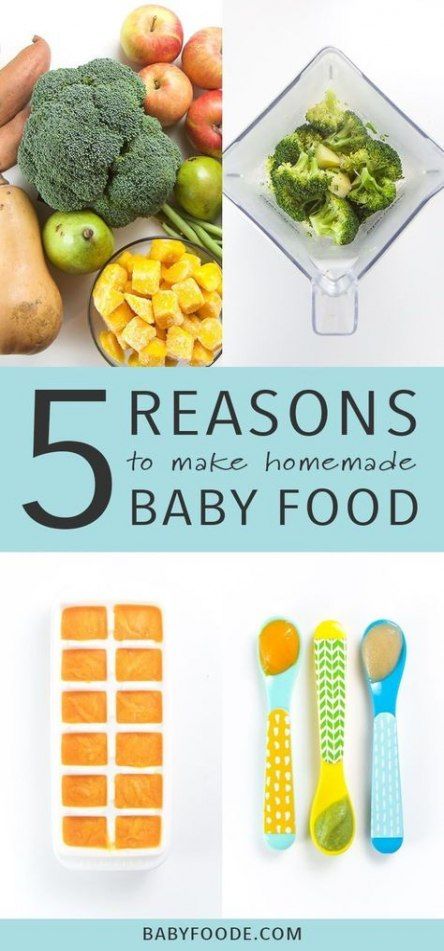 nine0005
nine0005
Recipe: Boiled Beets with Mint Yogurt Dressing
Edamame Soybeans in Pods with Roasted Garlic
Garlic, chili flakes, and lime juice give edamame a tangy flavor.
Recipe: Edamame Pods with Roasted Garlic
Braised Kale with Butternut Squash
The secret ingredient in this side dish is ginger, which adds warmth and depth to the vegetables. Butter is used at the very end: a great way to bring out the flavor of a dish without making it greasy. nine0005
Recipe: Braised Kale with Butternut Squash
Reduced Fat Potato Casserole
Ellie uses Gruyere cheese for her potato casserole. It has a bright nutty flavor, so a small amount will be enough.
Recipe: Reduced Fat Potato Casserole
Buffalo Cauliflower with Blue Cheese Dip
Enjoy your favorite party appetizer in a new form.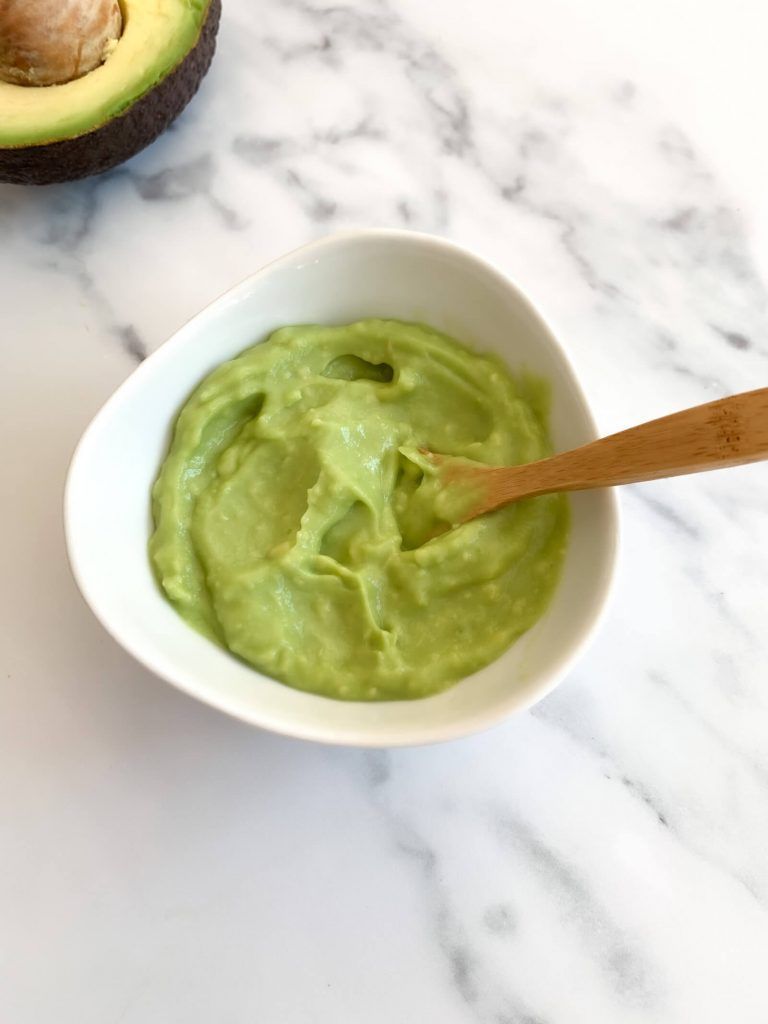 Hot buffalo cauliflower served with a mild blue cheese sauce is a delicious vegetable substitute for traditional chicken wings. nine0005
Hot buffalo cauliflower served with a mild blue cheese sauce is a delicious vegetable substitute for traditional chicken wings. nine0005
Recipe: Buffalo Cauliflower with Blue Cheese Dip
Spinach Green Apple Salad
Toasted walnuts and julienned Granny Smith apples provide a crunchy texture in contrast to the tender spinach leaves. Balance out the taste of this salad with a simple Dijon mustard dressing.
Recipe: Spinach and Green Apple Salad
Glazed Carrots with Mint Gremolata
Gremolata is a mixture of chopped greens with citrus fruits, usually lemon juice and zest. Here it is added to carrots, which are "baked" on the stove instead of the oven. nine0005
Recipe: Glazed Carrots with Mint Gremolata
Escarole Salad with Fried Bacon, Caramelized Onions and Blue Cheese Dressing
The flavors of bacon and blue cheese are quite strong, so these products can be used in small quantities for a green salad.
Recipe: Escarole Salad with Fried Bacon, Caramelized Onions and Blue Cheese Dressing
Leek with Delicate Sauce
Leek is the main ingredient in this side dish. Dijon mustard gives chicken broth-based sauce a creamy texture without the addition of cream. nine0005
Recipe: Leek with delicate sauce
Baked sweet potato with caramel crust
A little butter and maple syrup are enough to coat sweet potato slices. Roast the vegetables at a high temperature to brown them and intensify the flavor.
Recipe: Baked Sweet Potato with Caramel Crust
Potato Crush with Skin
Rachel adds buttermilk and chopped turkey bacon to the puree. "If you eat healthy food, you can eat more!" she says. nine0005
Recipe: Peeled Potato Crush
Boston Salad Greens with Lemon Olive Dressing
Toss fresh bib lettuce with light vinaigrette dressing and your favorite greens.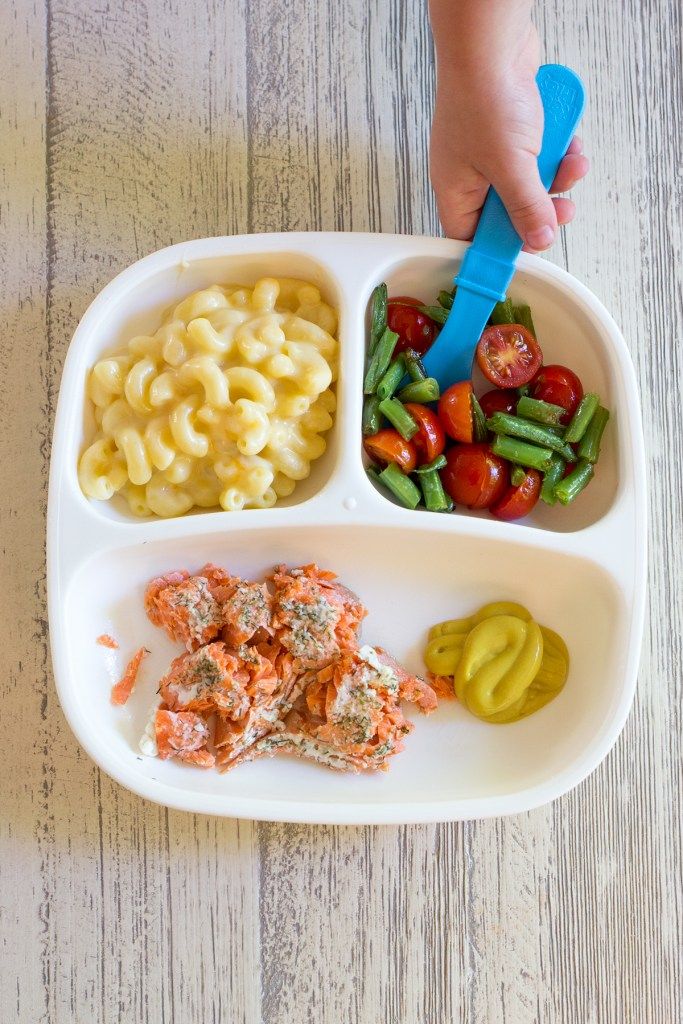 This recipe uses basil, dill, parsley and mint, but you can try different combinations to your taste.
This recipe uses basil, dill, parsley and mint, but you can try different combinations to your taste.
Recipe: Boston Salad Greens with Lemon Olive Dressing
Orange Juice Glazed Carrots
Orange juice and dill are the secret ingredients in a simple side dish of vitamin-rich carrots.
Recipe: Orange Juice Glazed Carrots
Herb Quinoa
Protein-rich, nutty-tasting quinoa doesn't require many additions. A simple dressing and chopped greens are enough to turn quinoa into a hearty side dish for fish, meat, or chicken.
Recipe: Herb Quinoa
Roasted Brussels Sprouts
Roasting Brussels sprouts intensifies its nutty flavor. Ina's recipe makes cabbage crunchy on the outside and soft on the inside.
Recipe: Roasted Brussels Sprouts
Potatoes with Fennel
Roasted fennel seeds with oil, lemon juice and parsley give boiled new potatoes an unusually pleasant taste.
Recipe: Fennel Potatoes
Ham and Apple Salad
This crunchy salad is perfect for when you want both sweet and savory. And homemade shallot dressing will impress guests. nine0005
Recipe: Apple and Ham Salad
Wheat Porridge with Walnuts and Dried Cherries
Ellie's Wheat Salad has a vibrant taste and appearance and is a great accompaniment to grilled meat and fish. Take the leftover salad the next day in a lunch box.
Recipe: Wheat porridge with walnuts and dried cherries
Rice with edamame beans and shiitake mushrooms
Three ingredients and a minimum of effort allow you to enjoy a simple side dish in the style of Asian cuisine. nine0005
Recipe: Rice with Edamame and Shiitake Mushrooms
Spiced Baked Chickpeas and Spinach
Baked Chickpeas with Paprika and Chipotle Powder is the perfect protein accompaniment to spinach leaves.
Recipe: Spiced Baked Chickpeas and Spinach
Baked Turnips with Mushrooms
When baked, the turnips and onions become sweeter, and the mushrooms acquire a rich, "meaty" flavor.
Recipe: Baked turnip with mushrooms
Gems Roasted Vegetables
No more messing around with multiple pots: put all your vegetables in one pot and simply roast them with garlic.
Recipe: Baked vegetables "Gems"
Baked potato stuffed with garlic and onion puree
This potato has a rich creamy taste, but does not contain excess fat. The recipe uses a little butter and low-fat cream cheese.
Recipe: Baked Potato Stuffed with Garlic-Onion Puree
Microwave Spiced Spaghetti Squash
The secret to this quick meal is microwave cooking; spaghetti squash is enough to place in less than 20 minutes. For an easy side dish, toss the spaghetti-like fibers into an Indian-style sauce.
For an easy side dish, toss the spaghetti-like fibers into an Indian-style sauce.
Recipe: Spicy Microwave Spaghetti Squash
Roasted Coconut and Peanut Rapini Squash
A few ingredients and 10 minutes to cook for this Spicy Rapini Dish. nine0005
Recipe: Coconut Peanut Roast Rapini
Grilled Avocado with Tahini Sauce
Avocado lovers will love this quick side dish that only takes 10 minutes to prepare.
Recipe: Grilled Avocado with Tahini Sauce
Potato, Zucchini and Yellow Zucchini Gratin
Gratin doesn't have to be high in cheese and butter; This healthier version uses a bit of Manchego cheese for a bolder flavor. nine0005
Recipe: Potato, Zucchini and Yellow Squash Gratin
Boston Salad with Sour Milk Dressing
Large head lettuce topped with a rich yogurt and buttermilk dressing.
Recipe: Boston Salad with Sour Milk Dressing
Spicy Green Beans with Parmesan and Kale
Fragrant cremini mushrooms are paired in a simple side dish with crispy green beans and kale. Red pepper flakes add extra spiciness. nine0005
Recipe: Spicy Green Beans with Parmesan and Kale
Baked Beans with Chicken and Chard
Green chard adds a beautiful color to this vibrant version of baked beans.
Recipe: Baked Beans with Chicken and Chard
Corn and Pumpkin Pudding
Pumpkin adds interest to this delicious side dish. It not only saturates the dish with vitamins and decorates with bright color, but also gives a delicate texture that goes well with crunchy corn kernels. nine0005
Recipe: Corn and Pumpkin Pudding
Whole-Wheat Spelled Porridge with Shallow Pasta
Make a whole-grain salad with thick, nutty farro. It can be found sold by weight in grocery or health food stores, as well as in packaged whole grains.
It can be found sold by weight in grocery or health food stores, as well as in packaged whole grains.
Recipe: Whole-grain spelled porridge with small pasta
Quinoa with shiitake mushrooms and baby peas
Toss quinoa with shiitake mushrooms, snow peas, soy sauce and sesame oil for an Asian-inspired side dish reminiscent of fried rice.
Recipe: Quinoa with Shiitake Mushrooms and Baby Peas
Baked Waxy Potatoes with Lemon
Potatoes are baked with lemon skins, giving the garnish a rich lemon flavor.
Recipe: Lemon Baked Waxy Potato
Red and Brussels Sprouts Salad
This salad cooks quickly, but if you let the cabbage soak in the gentle dressing, the vegetables will be full of flavor.
Recipe: Red and Brussels Sprouts Salad
Zucchini Casserole with Tomatoes
Brown the zucchini over high heat first, it will cook evenly with the tomato sauce.
Recipe: Zucchini Casserole with Tomatoes
Quinoa Pilaf with Cremini Mushrooms
Strictly speaking, quinoa is a seed, but it is considered a whole grain. It has a nutty flavor and is a good substitute for rice, especially when cooked with mushrooms for pilaf.
Recipe: Quinoa Pilaf with Cremini Mushrooms
Caesar Salad with Kale
The popular salad gets a new look: romaine lettuce is replaced with kale. Brown the hearty, antioxidant-rich kale in the oven for a nice crunchy texture. nine0005
Recipe: Caesar Salad with Kale
Zucchini Sauteed with Hot Peppers and Herbs
Sliced jalapenos and lots of spices add a zesty flavor to the zucchini without adding any calories.
Recipe: Zucchini Sauteed with Hot Peppers and Herbs
Purple Jacket Potato with Rosemary and Olives
Purple Potatoes are Boiled Keeping Their Color and Texture. Then it is sprinkled with fragrant and healthy olive oil and mixed with savory olives. nine0005
Then it is sprinkled with fragrant and healthy olive oil and mixed with savory olives. nine0005
Recipe: Purple Jacket Potato with Rosemary and Olives
Roasted Asparagus with Olives
Flavorful garlic and olives, along with fragrant basil, bring crispy asparagus to life. Cut the asparagus into small pieces so they cook faster.
Recipe: Roasted Asparagus with Olives
Rainbow Pepper Couscous
This whole grain couscous with vegetables can be served hot or cold. nine0005
Recipe: Rainbow Pepper Couscous
Roasted Mushrooms with Lemon Pepper
Save time and buy chopped fresh mushrooms instead of packaged ones. This quick meal is low in calories and rich in flavors. Serve mushrooms on their own as a side dish, or with chicken, pork, or fish.
Recipe: Lemon Pepper Roasted Mushrooms
Tuscan Roasted White Beans
For an easy side dish for a weekday dinner, add tomatoes, rosemary and parmesan to canned white beans. nine0005
nine0005
Recipe: Tuscan Roast White Beans
Israeli Couscous Tabbouleh Salad
Melissa prepares this salad in a Mediterranean style with fresh parsley, cilantro and mint, but uses Israeli couscous instead of bulgur.
Recipe: Israeli Couscous Tabbouleh Salad
Spicy Green Tomato Avocado Salad
Celebrate green tomato season with a dish of corn lettuce, avocado and sweet and spicy jalapeño dressing. nine0005
Recipe: Spicy Green Tomato Avocado Salad
Buttered Sweet Potato with Horseradish
The combination of maple syrup, horseradish and butter with savory sweet sweet potato is just right. The dish is perfect for a festive dinner.
Recipe: Sweet Potato in Butter with Horseradish
Braised Spinach in Butter with Bacon
Yes, bacon and butter can also be used in healthy recipes! For a side dish with a Spanish flavor, a small amount of these products is enough. Oil for a brighter taste is used at the very end. nine0005
Oil for a brighter taste is used at the very end. nine0005
Recipe: Braised Spinach in Butter with Bacon
Creamy Chili and Lime Corn
This healthy whole grain side dish is inspired by the Mexican dish Elote, corn on the cob, usually baked and topped with butter, mayonnaise and cheese. This recipe retains the traditional flavors, and if frozen corn is used, the dish can be made all year round.
Recipe: Chili Lime Cream Corn
Baked Broccoli with Asiago Cheese
This fiber-rich dish uses a good technique for roasting broccoli: preheat a baking sheet before adding the vegetables, the edges will turn out crispy and golden brown.
Recipe: Baked Broccoli with Asiago Cheese
Grilled Stuffed Mushroom Caps
Mushrooms with Cheese are the perfect accompaniment to grilled chicken or pork loin. The dish can be quickly prepared and browned in the overhead oven in just a few minutes.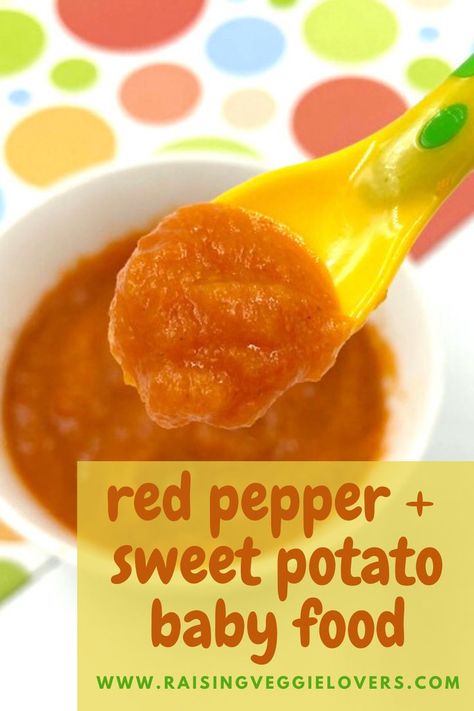 nine0005
nine0005
Recipe: Grilled Stuffed Mushroom Caps
Citrus Buttered Kale
This garnish is the perfect combination of citrus and spicy taste. We suggest using young cabbage: it cooks faster, while it contains at least vitamins K and C and lutein (good for vision).
Recipe: Buttered Kale with Citrus Flavor
Black Beans Roasted with Chili Pepper
The recipe offers a quick way to serve black beans, which are rich in fiber and protein. Try also using pinto beans.
Recipe: Chili Roasted Black Beans
Moroccan Baked Sweet Potato
This fiber-rich side dish is colorful and warming. The sweetness of dried apricots and sweet potatoes, as well as the astringency of lemon juice, are pleasantly balanced by spices.
Recipe: Moroccan Baked Sweet Potato
Vegetable Carpaccio Open Pie
A classic vegetable tart made beautiful with a colorful fresh radish and cucumber topping.
Recipe: Vegetable Carpaccio Open Pie
Whole Wheat Buns
These warm scones require whole wheat flour instead of traditional refined flour, which makes them full and rich.
Recipe: Whole Grain Buns
Baked Sweet Potato with La Boise Spice
Ina uses sweet potato and a flavorful spice mix for a healthier version of French fries. Instead of deep frying, the dish is baked in the oven. nine0005
Recipe: Baked Sweet Potato La Boise
Oatmeal with Corn
Oatmeal doesn't have to be sweet; it is good for savory dishes. Risotto, an Italian dish usually made with arborio rice, can also be made with raw oats for a healthy and homey version. Serve the dish for dinner with grilled shrimp or catfish.
Recipe: Oatmeal with corn
Brown rice with mushrooms and kimchi
Did you know that kimchi, a marinated Korean dish, is probiotic, just like yogurt? Add it to your "arsenal" of healthy products. A dash of kimchi will give this low-calorie side dish a punchy flavor.
A dash of kimchi will give this low-calorie side dish a punchy flavor.
Recipe: Brown Rice with Mushrooms and Kimchi
Roasted Beetroot Salad
Capers and pickles add the perfect savory note that complements the sweet taste of roasted beets.
Recipe: Roasted Beetroot Salad
Roasted Carrots and Shallots with Olives and Almonds
Large Cerignola Olives and Marcona Almonds give this Spanish-style Roasted Carrots a salty flavor and crunchy texture. The dish goes well with fish, turkey and lamb and goes well with Chardonnay, Pinot Grigio, Merlot and Cabernet wines - it can be served as an appetizer or side dish in any season.
Recipe: Baked Carrots and Shallots with Olives and Almonds
Wheat Grains with Rice and Curry
Whole wheat is one of the most textured grains. To soften it, fill it with water overnight. Wheat pairs well with fluffy basmati rice in this Indian-inspired side dish.
Wheat pairs well with fluffy basmati rice in this Indian-inspired side dish.
Recipe: Wheat Grains with Rice and Curry
Cajun Spelled
Spelled is a type of wheat that can replace wheat grains in recipes, but has a milder flavor. Delicate large grains go well with Cajun spices. nine0005
Recipe: Cajun Spelled
Creamy Spinach Stewed with Shallots
Ellie uses skimmed milk and chicken broth to add flavor and texture to a classic spinach dish without adding extra fat or calories.
Recipe: Creamy spinach stewed with shallots
Buckwheat porridge with carrots, hazelnuts and feta
Salad made from toasted buckwheat. Buckwheat, unlike wheat, does not contain gluten, and one of its related crops is rhubarb. This cereal is very rich in vitamins and minerals. nine0005
Recipe: Buckwheat porridge with carrots, hazelnuts and feta
Stewed mustard with collard greens
Smoked paprika in this simple and healthy side dish gives roasted kale and mustard greens a distinct peppery flavor. If desired, you can add a little hot sauce for spiciness.
If desired, you can add a little hot sauce for spiciness.
Recipe: Stewed salad mustard with kale
Barley porridge with small pasta
Barley is sold in two types: whole grain and peeled. During processing, about a third of the grain is removed, due to which the cereal cooks faster, but loses some of the nutrients. Whole grain barley takes longer to cook, is healthier and has a pleasant chewy texture. This pilaf is an easy recipe for using whole grain barley. nine0005
Recipe: Barley porridge with small pasta
Barley porridge with green peas and bacon
This fiber-rich side dish is a hearty and beautiful addition to any meal. It is best cooked with whole-grain (unpeeled) barley: it lends itself to less processing, has a chewy texture, and cooks longer than regular pearl barley. But both types are suitable for the recipe (although barley, while useful, is not considered whole grain porridge). You can also use brown rice, spelt, or another whole grain product. nine0005
You can also use brown rice, spelt, or another whole grain product. nine0005
Recipe: Barley Porridge with Green Peas and Bacon
Cajun Potato Chips
For Creole-style crispy potatoes, replace the mayonnaise with Greek yogurt for a creamier, healthier dip.
Recipe: Cajun Potato Chips
Khorasan Wheat in Marinara Sauce
Khorasan Wheat grains are long, firm and golden; they are larger than other types of wheat. Dense texture and rich taste make it satisfying. In addition, it is rich in protein, vitamin E and fiber (10 grams per serving!). This wheat pairs wonderfully with marinara sauce and parmesan cheese. nine0005
Recipe: Khorasan Wheat in Marinara Sauce
Green Beans in Soy Sauce Glaze
Soy sauce and garlic add character to Guy Fieri's vegetable side dish.
Recipe: Soy Sauce Glazed Green Beans
Whole Grain Quinoa with Spicy Green Paste
Quinoa is originally from Peru and was called the "golden grain" by the ancient Incas. It belongs to the same family as spinach, is rich in protein and has large, nutritious seeds. They are coated in saponins, which have a bitter, soapy taste, so be sure to rinse quinoa thoroughly before cooking. Serve this simple and delicious dish with grilled chicken or enchiladas. nine0005
It belongs to the same family as spinach, is rich in protein and has large, nutritious seeds. They are coated in saponins, which have a bitter, soapy taste, so be sure to rinse quinoa thoroughly before cooking. Serve this simple and delicious dish with grilled chicken or enchiladas. nine0005
Recipe: Whole Grain Quinoa with Spicy Green Paste
Cucumber Mango Rice Salad
The flavors and textures of mango, cucumber, rice, peanuts and cilantro blend together so well you'll wonder why rice hasn't been prepared this way before.
Recipe: Rice Salad with Cucumbers and Mango
Chipollini Braised in Red Wine
Sunny browns the chipollini before pouring wine and balsamic vinegar over it. Evaporating, the liquid becomes a rich dark glaze. nine0005
Recipe: Cipollini stewed in red wine
Quinoa with garlic, pine nuts and raisins
Quinoa is a fiber-rich cereal that pairs beautifully with the classic combination of garlic, pine nuts and raisins.
Recipe: Quinoa with Garlic, Pine Nuts and Raisins
Whole Wheat Fricke with Three Herbs
Fricke is a crushed roasted wheat similar to bulgur. It has a slightly smoky, nutty flavor and a nice firm texture, and is a good source of fiber and protein. If you can't find freekeh on sale, boiled brown rice is a good substitute. nine0005
Recipe: Tri-Herb Whole Grain Fricke Wheat
Green Bean Stew with Tomatoes
A pinch of cinnamon gives this healthy, colorful dish a deep flavor.
Recipe: String Bean Stew with Tomatoes
Whole Wheat Corn Cake (Cornbread)
Honey gives this low-calorie cornbread a sweet flavor. The perfect accompaniment to hearty stews!
Recipe: Whole wheat corn muffin (cornbread)
French fries in the oven
Eating healthy doesn't mean giving up french fries. Ellie offers a simple recipe for crispy potatoes, which are not deep-fried, but in the oven.
Ellie offers a simple recipe for crispy potatoes, which are not deep-fried, but in the oven.
Recipe: French fries in the oven
Mediterranean Bulgur
Dried apricots are rich in fiber and give bulgur a slight sweetness that contrasts with the salty taste of the olives. nine0005
Recipe: Mediterranean Bulgur
Roasted Garlic Herb Paste Sandwich
Stuff garlic bread with chopped herbs and you won't need a thick layer of cheese.
Recipe: Roasted Garlic and Herb Pasta Sandwich
Grilled Polenta
Parmesan gives the polenta slices a salty flavor and a smoky flavor when grilled. This is a great side dish for soups or salads.
Recipe: Grilled Polenta
Turnip Puree
Turnip is an underrated vegetable, but with this 4-ingredient mashed potato alternative, you might love it too.